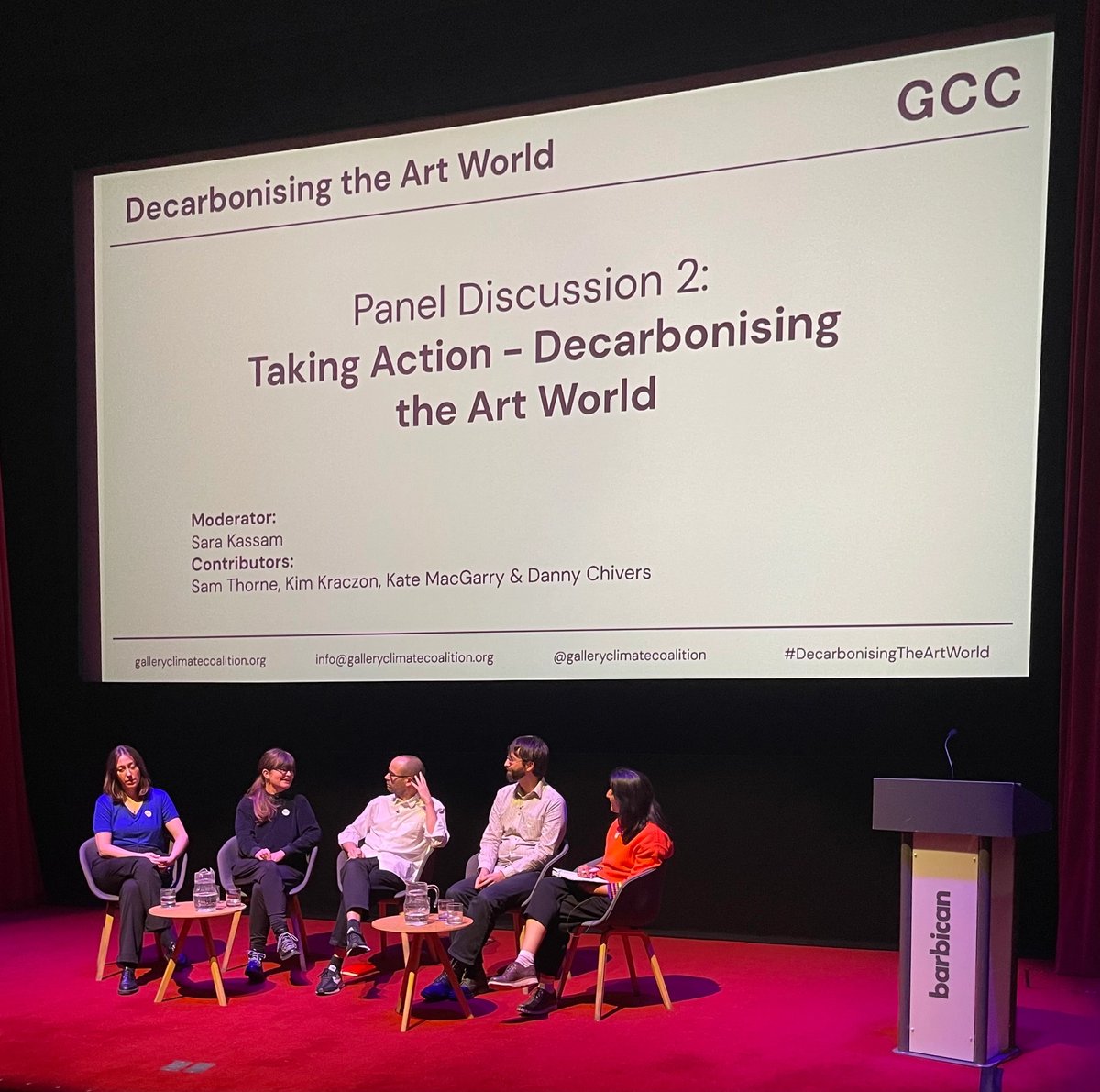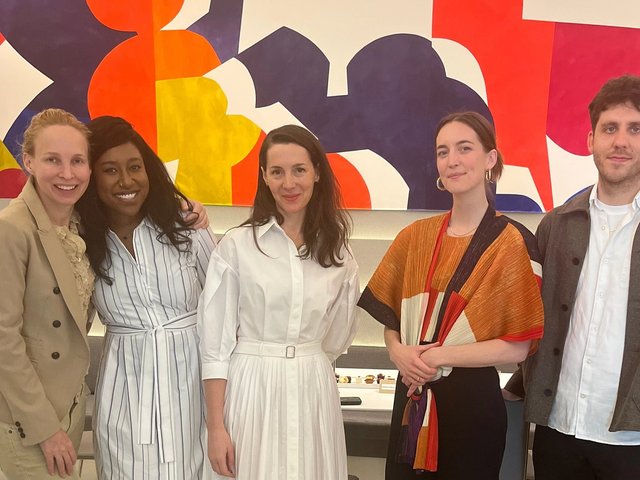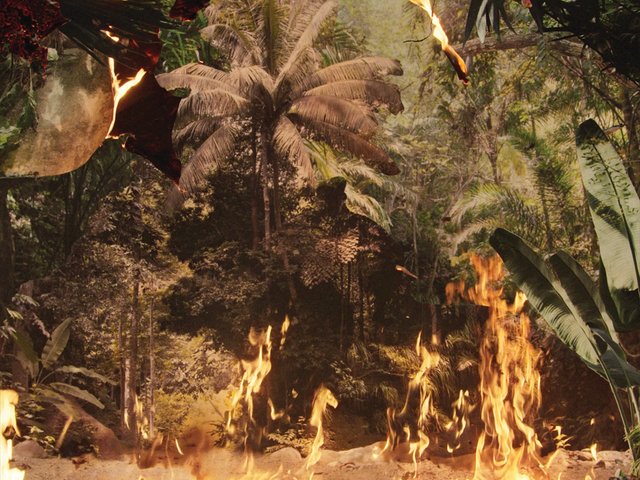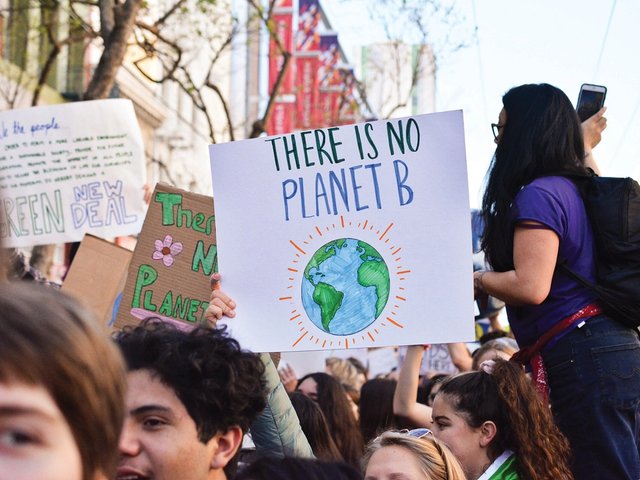Leading figures from across the UK art world gathered at the Barbican Centre in London yesterday for the inaugural Gallery Climate Coalition (GCC) conference where, rather unprecedentedly, the art world’s impact on the environment was the sole, not secondary, topic of conversation.
The GCC, a charity launched in October 2020, encompasses more than 550 organisations and individual members from both commercial and institutional fields. Its aim: to decarbonise the visual art sector and promote zero waste practices, in line with the Paris Agreement.
The movement is growing, with GCC networks now forming in Berlin, Los Angeles and soon, Italy. But fine art has long been accused of existing in an echo chamber, and central to yesterday's discussion was how the industry—and culture more widely—can be an effective tool to tackle the climate crisis.
Responding to this question over three hours were two panels, chaired respectively by The Art Newspaper’s contemporary art correspondent (and GCC founding member) Louisa Buck and Sara Kassam, the sustainability lead at the Victoria and Albert Museum (V&A) in London.
The first group, which included the artists Fiona Banner and Haroon Mirza, as well as the V&A East director Gus Casely-Hayford, dwelled largely on artistic responses to our impending ecocide and the importance of the industry's involvement in preventing it. The second panel, which featured the London dealer Kate MacGarry and the GCC carbon consultant Danny Chivers, provided more concrete answers and practical solutions. Both groups stressed the nascency of the GCC’s project and the vast amount of work there is to do.
A full livestream of the event can be found here, but for the impatient, here are five key takeaways:
1. To help you take the first steps towards zero waste, the GCC has released a decarbonisation plan
In this detailed, step-by-step action plan, the GCC breaks down how various aspects of the industry, from air freight to NFTs, contribute to carbon emissions, and provides alternatives to help shift behaviour. But before you begin, the GCC recommends first using its carbon calculator, designed specifically for the art industry, which is a good first step for an organisation or individual to assess their fossil fuel emissions output.
2. So far the conversation is centred around carbon offsetting, but it needs to be more holistic
The GCC's actions thus far have been around organising auctions of art, the proceeds of which go towards the environmental lobbying group ClientEarth, chosen for its immediate results—recent success stories include shutting down Europe's largest power plant in Poland. While partnering with ClientEarth is imperative if the GCC wants to achieve its mission to reduce emissions by 7% each year, Chivers emphasised that environmental issues don't just stop at managing carbon emissions. Shipping by sea, as opposed to air, he says, reduces emissions by 95%, but still heavily relies on pollutants that have adverse effects on marine life. Issues ranging from recovering topsoil to promoting biodiversity are all factors that must be taken into consideration when discussing our environmental impact.
3. When it comes to packaging, the art world is looking to both to the future and the past
It is no secret that packaging—both of art and otherwise—creates a vast amount of non-recyclable waste. Kim Kraczon—a waste and materials specialist and former conservator at eco-forward Olafur Eliasson's Berlin studio—says that where possible she now encourages the use of paper cushions and new biodegradable materials such as cornstarch foam boxes to transport large works. But not everyone is looking to invent new systems: MacGarry said that her gallery is moving back to the "old school methods of straps and blankets, which dust off quite well". If it ain't broke, don't fix it.
4. Just because the art world is collaborating on climate change doesn't mean it sees eye-to-eye on everything else
Striking of both panels, and the GCC more widely, was the breadth of the art world they encompassed. And while the whole sector must co-operate to solve such a pressing issue, it was evident that opposing ideas still exist over wider debates. This was no better exemplified than by a comment from panelist Lucia Pietroiusti, the strategic consultant for ecology at the Serpentine Galleries in London, who said that the process of climate justice is "tied up with that of restitution". Pietrousti was on the same panel as Casely-Hayford, whose own institution's stance on the restitution of artefacts has been criticised for being insufficient.
When asked by The Art Newspaper as to whether V&A East would consider restituting objects from colonial periods, Casely-Hayford replied that there are “complex conversations and subtle negotiations involved” that he is “not able to go into right now”. But he added that he "senses an ambient shift and an opportunity to see a partial solution in this area”. His nebulous response suggests that while GCC members might have a common aim, their ideas of how to get there are not yet synced.
5. The GCC could be a powerful environmental lobbying force—if it organises correctly
Compared to many other sectors of the economy, art is still small. Yet its cultural visibility has always been oversized and its ability to both resonate emotionally and clarify ideas is arguably unparalleled. As GCC founder and Frieze fairs global director Victoria Siddall bluntly put it: "The art world is very good at raising money and getting attention.” This ability, all panelists agreed, must be harnessed by the GCC to connect across other culture sectors such as fashion, design and music to become a force to lobby for real industry change.
The event was rounded out by a series of readings by the poet and novelist Ben Okri, who read from a new book Every Leaf a Hallelujah. Before he did, Okri left the audience with a stern, but optimistic statement: "The art world is potentially extremely powerful for the possibilities of climate change and should be one of the movement's leaders, so don't talk yourself down."





